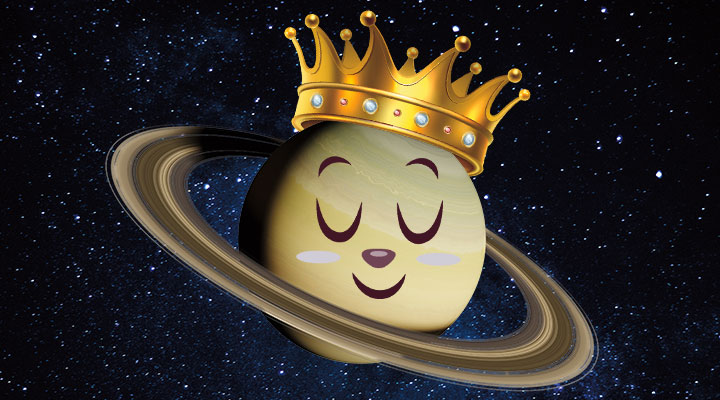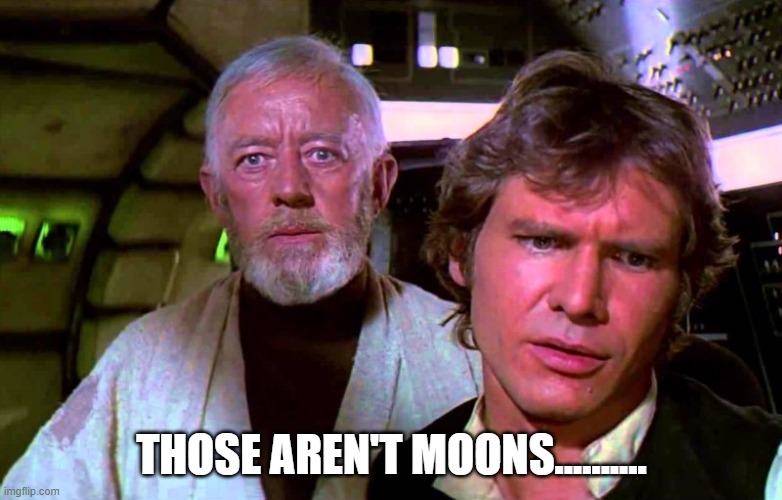
Posted on 05/12/2023 1:02:40 PM PDT by Red Badger
Sorry, Jupiter.
Astronomers have discovered 62 new moons orbiting the ringed planet Saturn.
The satellite haul brings the planet's total number of moons to over 100 and also means the gas giant takes back the crown as the solar system's "moon king" from Jupiter.
Prior to this discovery, Saturn had 83 moons recognized by the International Astronomical Union(opens in new tab), so the new batch brings the total number to an incredible 145. The discovery marks another milestone for Saturn, with the planet becoming the first world in the cosmos known to be orbited by more than 100 moons.
The new moons were discovered by a team led by Edward Ashton, a postdoctoral fellow at the Academia Sinica Institute of Astronomy and Astrophysics, who used a technique called "shift and stack" to find these smaller and fainter moons around Saturn.
The technique uses a set of images shifting at the same speed at which a moon moves through the sky to enhance the signal from that moon. Moons that are too faint to be seen in single images can reveal themselves in the resultant "stacked image."
Astronomers have used this method to search for moons around the ice giants Neptune and Uranus, but this is the first time it has been applied to the solar system's second-largest planet, Saturn.
The data used by the team was collected between 2019 and 2021 in three-hour spans by the Canada-France-Hawaii Telescope (CFHT) on top of Maunakea in Hawaii. It allowed the astronomers to detect moons around Saturn as small as 1.6 miles (2.5 kilometers) in diameter. That's about two-thirds the length of Hollywood's Walk of Fame.
Though some of the moons had been spotted as early as 2019, it takes more than sighting an object close to a planet to confirm it is a moon and not an asteroid making a brief close passage to that planet. To change these objects from "suspected moons" to "confirmed moons" of Saturn, the astronomers had to track them for several years to ensure each is actually orbiting the gas giant.
Performing a painstaking process of matching objects detected on different nights over the course of 24 months, the team tracked 63 objects that they ended up confirming as moons. One of these satellites was revealed back in 2021, with the remaining 62 moons gradually announced over the past few weeks.
"Tracking these moons makes me recall playing the kid's game Dot-to-Dot, because we have to connect the various appearances of these moons in our data with a viable orbit," Ashton said in a statement(opens in new tab). "But with about 100 different games on the same page, and you don't know which dot belongs to which puzzle."
Saturn's irregular moons may have a violent history
The newly discovered moons of Saturn are classified as "irregular moons." This term refers to objects that are believed to have been captured by a planet's gravitational influence and end up orbiting it on large, flattened or "elliptical" paths that are more inclined in comparison to the orbits of regular moons.
Saturn now has 121 known irregular moons along with its 24 regular moons. Irregular moons like these new ones tend to bunch up in groupings depending on the tilt of their orbits. Saturn's system currently hosts three of these groupings — the Inuit group, the Gallic group and the densely populated Norse group, all of which take their names from different mythologies.
All of the newfound moons of Saturn fall into one of these three currently existing groupings. Three of the new moons belong to the Inuit group, but the majority fit in the Norse group.
The moons in these three groups are believed to have been created when larger moons around Saturn originally captured by the gas giant slammed together and fragmented. Investigating the orbits of Saturn's irregular moons could help astronomers better understand the history of such collisions in the gas giant system.
The team behind the new discovery thinks that the large number of tiny moons in a retrograde orbit around Saturn (that is, opposite in direction to the planet's orbit) is evidence of a collision between irregular moons around the gas giant as recently as 100 million years ago. This collision is believed to have created the moons in the Norse group.
"As one pushes to the limit of modern telescopes, we are finding increasing evidence that a moderate-sized moon orbiting backward around Saturn was blown apart something like 100 million years ago," team member and University of British Columbia astronomer Brett Gladman said in the same statement.
Jupiter leap-frogged Saturn for the moon crown in February 2023 when 12 new moons were found around the solar system's largest planet, bringing the total number of known Jovian moons to 92.
But the moon title is not set in stone; it could change hands again as astronomers' techniques for discovering moons continue to improve.
Ping!...................
I demand equity. Earth only has 1 and it’s not fair.

To make a Uranus joke or to not make a Uranus joke.......that, is the question. 🤔
I thought Saturn went bankrupt, mooning the Universe not withstanding.
Must have gotten a Universal Government Bailout..................

> Saturn reclaims ‘moon king’ title <
Oh, great. And I just released my latest book, “Jupiter, the Forever Moon King”.
Where is the equity? Xao Bi-Dung should do something.
“The satellite haul brings the planet’s total number of moons to over 100”
If they are to be consistent shouldn’t some of those moons be called dwarf moons. :-)


Hmmmmmmm, since the definition of ‘planet’ is changeable according to the whims of astronomers, can we not redefine ‘moon’ to include artificial objects orbiting a planet as ‘moons’? Thus, redefining all the satellites, and counting THE MOON, Earth now has 5,466 moons.
OK, some horrible Dad humor on a Friday afternoon.
PS… we do not even need the satellites to be officially or scientifically to be moons. They can just identify as moons. There, Done! Earth Wins! Heck, Earth can identify as the sun! Or as a galaxy. Science says so… when Science is what ever the leftists say it is…
What about Uranus and its moons?
…….the little boy laughed to see such a sight,
and the dish ran away with the spoon!
Thanks Red Badger.
"As one pushes to the limit of modern telescopes, we are finding increasing evidence that a moderate-sized moon orbiting backward around Saturn was blown apart something like 100 million years ago," team member and University of British Columbia astronomer Brett Gladman said in the same statement.
Disclaimer: Opinions posted on Free Republic are those of the individual posters and do not necessarily represent the opinion of Free Republic or its management. All materials posted herein are protected by copyright law and the exemption for fair use of copyrighted works.